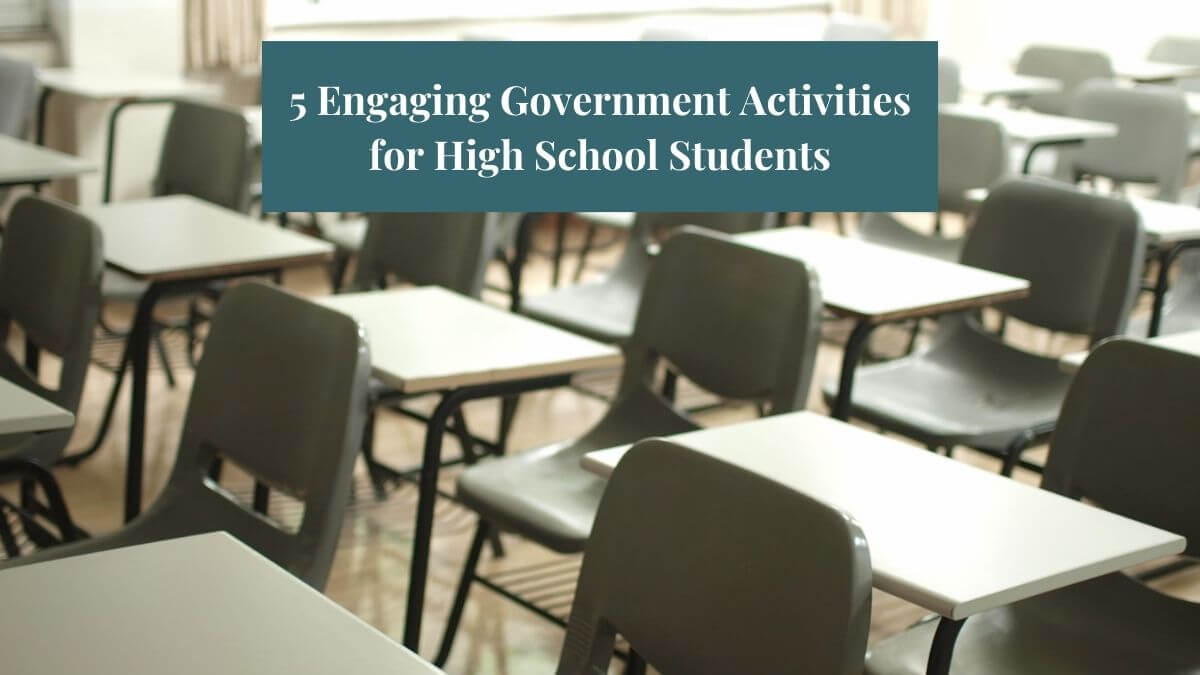When I became a 12th grade social studies teacher I dreaded teaching my government class (lol). For one, seniors can be super sassy, and two, many have senioritis especially after they’ve submitted their college applications. Everyday after school I wondered what I could do to liven up my class. Then one day I had an idea of incorporating more government activities and projects for high school where students are “doing” and less “lessons” where I’m standing in front of the class attempting to deliver content (lol). After all, seniors know everything already right? Lol.
If you’re a government teacher and ever felt like me OR if you’re just looking for ideas and projects to supplement your high school curriculum, you’ve come to the right place!
I’ll walk you through some activities and projects that you can use and recreate in your own classroom. If you’re interested, you can also purchase my Government Activities for High School Bundle. This bundle includes ready-made student handouts for you to print and use right away!
If not, no worries! Continue reading this post to get some ideas for your own class.
Political Philosophers Activity
The first activity you can do at the beginning of the semester to introduce students to your government course is to have them analyze the political beliefs of philosophers. For my class, I had students analyze the beliefs of John Locke, Charles-Louis Montesquieu, and Thomas Hobbes.
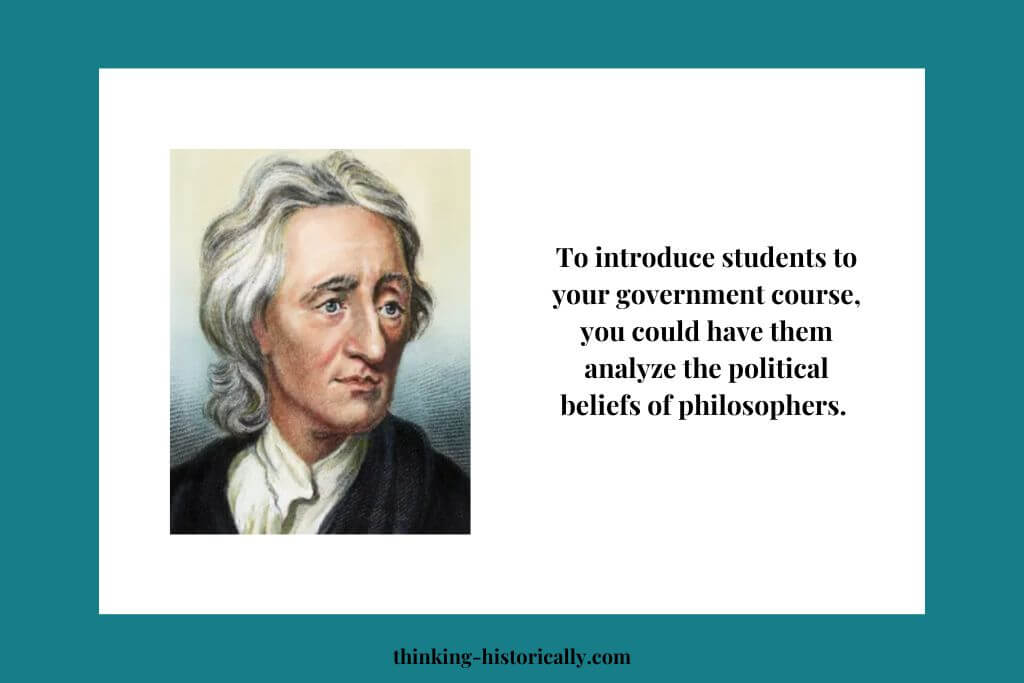
The primary sources that my students analyzed were Second Treatise of Civil Government 1960 (Locke), The Spirit of the Laws 1748 (Montesquieu), and The Leviathan (Hobbes). Students can work in pairs or individually to analyze these documents. Next, have them summarize each political thinkers’ beliefs in 2-3 sentences and then have a discussion about their beliefs.
You may open up the discussion by asking students if they agree or disagree with the political thinkers.
Next, I had students read an article about the capitol riot that took place on January 6, 2021. After reading the article about the riot, students had to choose one political thinker and explain what that political thinker would say about the riot.
It’s pretty cool to see students interpret current events through founding political thinkers!
Amendments Activity
Another activity you can do with your government students is related to the Bill of Rights Amendments. One way you can teach students about the amendments is by giving students case studies of Supreme Court cases that deal with an amendment. The case studies should include a brief statement of facts that explain what happened in the case.
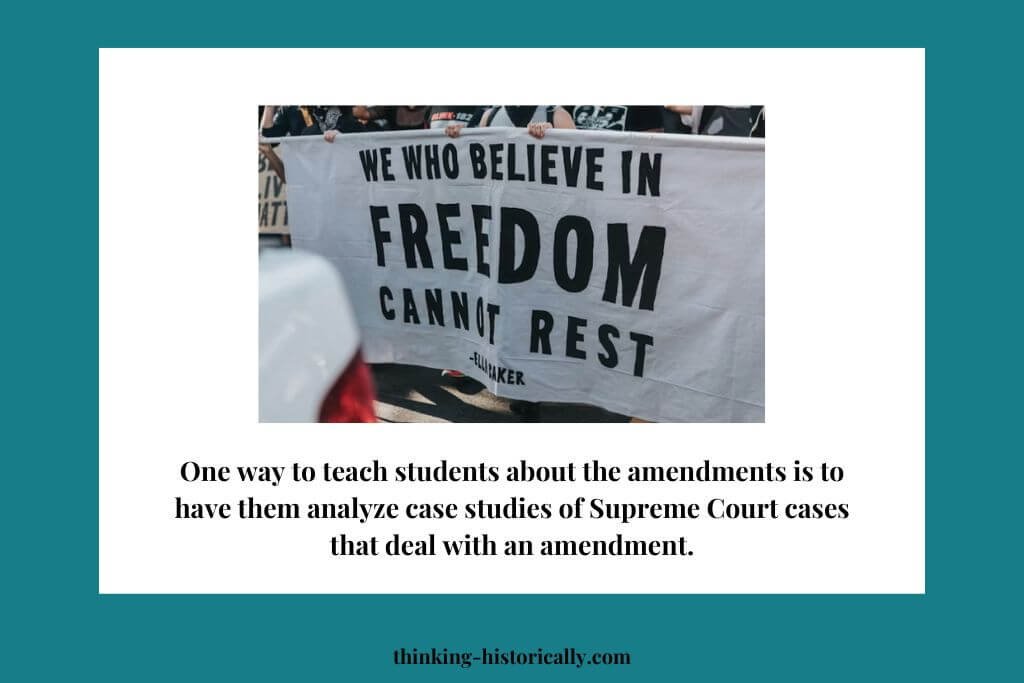
After students read the case studies, you can give students an opportunity to “be the judge” and decide how they think the Supreme Court should act. This is a great way to get students talking and participating in thoughtful class discussions!
After students have discussed the case, you can reveal what the Supreme Court decided.
For the First Amendment, I went over the following cases with my class:
- Schenck v. United States (1919)
- Chaplinsky v. New Hampshire (1942)
- New York Times v. Sullivan (1964)
- Tinker v. Des Moines (1969)
- Miller v. California (1973)
- Texas v. Johnson (1989)
- Reno v. ACLU (1997)
Check out my post, 7 First Amendment Landmark Supreme Court Cases to Teach High School Students for a brief description of each case and the constitutional question involved in each case.
You can use this method of using case studies if you plan on covering other amendments in your course.
Debate!
Another interactive activity you can have your students participate in is an interactive debate! For government class, you can turn any amendment into a debate! You can do this by looking up at Supreme Court cases. For my class, I had students debate where or not a teen cheerleaders snapchat violated the First Amendment. If you would like to read more about how you can set up a debate in your own class read my post Using a Class Debate in a Social Studies Classroom.
Legislative Process Activity
The next activity you can have your students do is to participate in a lawmaking process simulation. In this project, students pretend to be members of Congress and analyze bills to decide whether or not these bills will pass into laws.
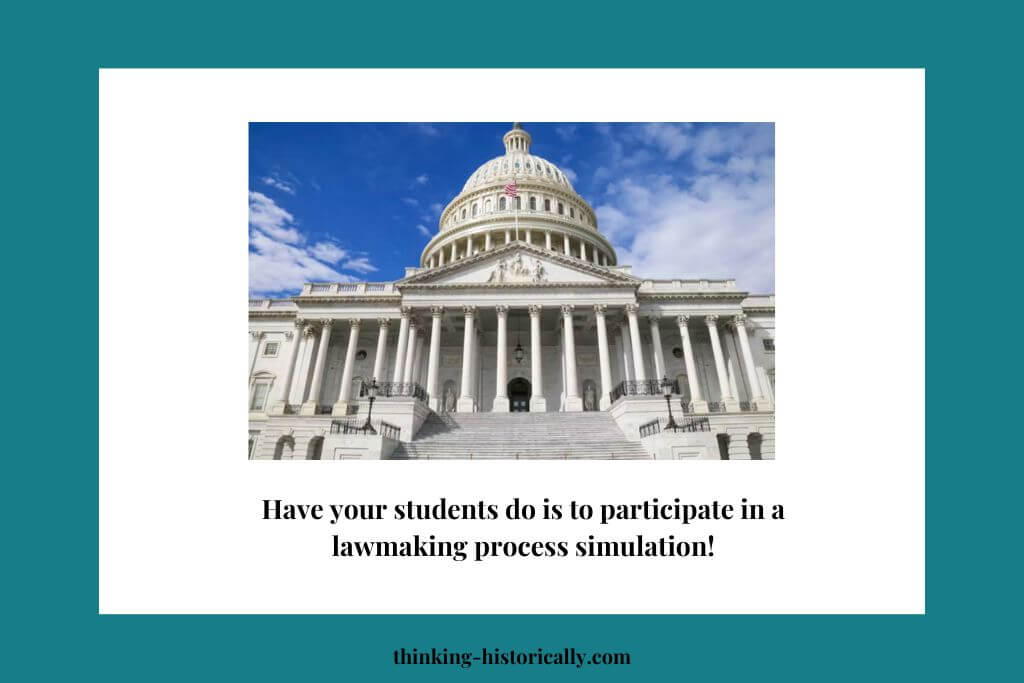
There are three stages of the legislative process that students enact. They are:
- The committee hearing where members of congress learn about legislation
- The committee markup where committees change and amend bills
- The floor debate where the bill is debated.
To set this simulation up, introduce students to proposed legislation. You can either make up a bill or use a current piece of legislation. You can find current legislation at: https://www.govtrack.us/. Then, have students analyze the bill and write opening statements in support or against the bill.
After students have written opening statements, have them participate in a committee hearing, committee markup, and floor debate.
If you’re interested in purchasing my legislative process simulation, click here! It includes detailed instructions, rubrics, and graphic organizers.
Mock Supreme Court Moot Court
Finally, you can have your students participate in is a mock supreme court moot court. The purpose of a mock supreme court is to have students understand the process of how Supreme Court Justices make rulings on a lower court’s decision.
In this moot court, students play the roles of Supreme Court Justices, the petitioner/appellant, and the Respondent/appellant. You can make up cases or you can your students use real Supreme Court cases. For my class, I used real cases. One case I used was Elonis v. United States.
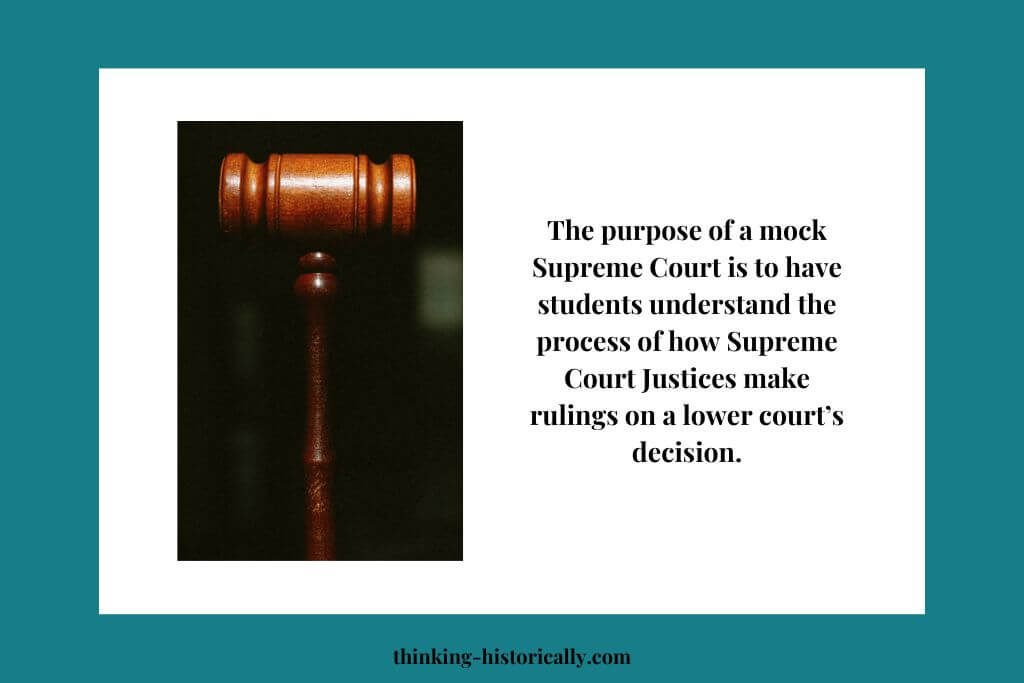
How to Set Up the Debate
To set this Supreme Court Moot court up, You will assign students to be Supreme Court justices, respondents, or petitioners. After assigning roles, introduce students to the case they will be debating and have them analyze the case.
Once students have been assigned a role, they must prepare the following:
- Opening statements: In an opening statement, attorneys introduce themselves, including a brief summary of the facts of the case and the issue being addressed.
- Oral arguments: In oral arguments, attorneys present their strongest points or arguments
- Questions: Justices prepare questions to ask either side (petitioner or respondent)
- Rebuttal: During rebuttal, attorney’s respond to the opposing sides arguments. Although students don’t hear their opposing side’s arguments until the day of the debate, it is a good idea for students to predict arguments that the other side may use to better prepare themselves.
Once students have analyzed the case and written up opening statements, have them participate in a moot court. The moot court procedures are:
- Opening Statement (Respondent)
- Opening Statement (Petitioner)
- Oral Arguments (Respondent)
- Oral Arguments (Petitioner)
- Rebuttal (Respondent)
- Rebuttal (Petitioner)
- Justices give their decision
These activities are just some ideas that I’ve used in my class. They will make your class more interactive while your students “do” most of the work and you do less talking (lol)! Again, If you’re interested in purchasing my Government Activities bundle, click here!
Happy Teaching!
